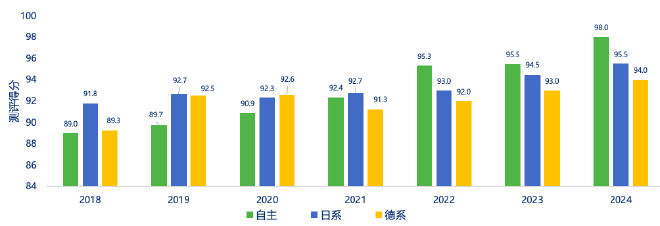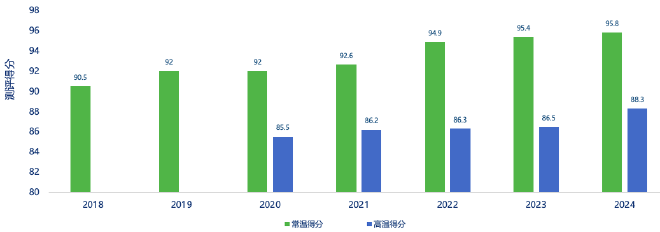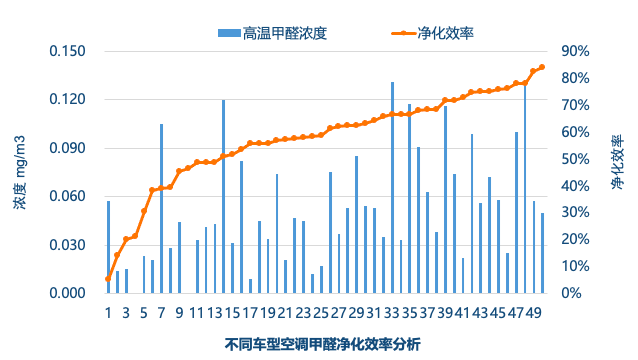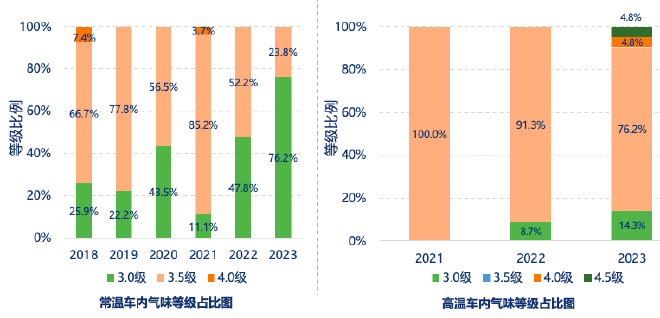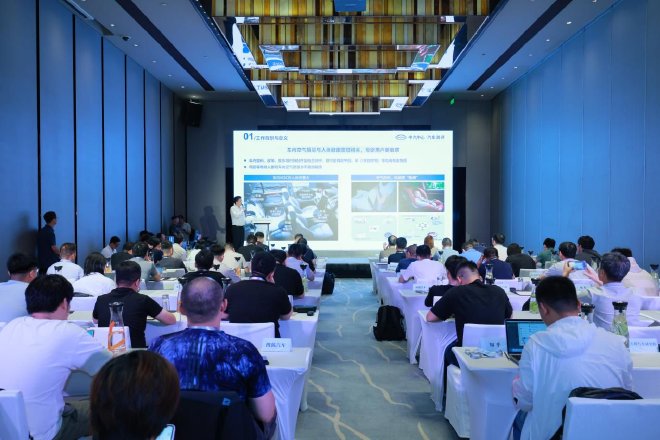Through the evaluation of 162 vehicle models, C-NCAP found eight trends in car interior air quality. With the arrival of summer, temperatures are rising. In high temperature environments, the temperature inside the car rises sharply, accompanied by various odors and harmful substances, posing a potential threat to the health of passengers. Ensuring healthy air quality inside the car has become a common issue for consumers and the automotive industry. On June 18, 2024, C-NCAP held its first media conference in Beijing. C-NCAP released the technical focus special issue “2024 China Passenger Car Interior Air Quality Insight”, summarizing the new findings in car interior air quality evaluation in China, and providing optimization suggestions to car manufacturers. This demonstrates C-NCAP’s years of dedication in the field of vehicle health performance evaluation and its relentless efforts to enhance consumers’ healthy travel experience.
162 vehicle models interior environment evaluation eight major findings The special issue shows that since 2012, CAQC has adhered to the responsibility of the “national team of vehicle evaluation,” adhered to the original intention of “testing for the people,” organized continuous vehicle health performance evaluations guided by consumer health travel needs, successively carried out evaluations such as C-ECAP, CCRT, C-GCAP, focused on volatile organic compounds and interior odor intensity testing indicators, and completed evaluations of the interior air quality of 162 vehicle models from 2018 to 2024, covering mainstream vehicle products in the Chinese market in terms of brand types, price distribution, and vehicle categories, and summarized eight major development trends based on this. Finding one: From catching up to leading, significant improvement in the interior air quality of domestic brand vehicles. The evaluation results show that various types of vehicles have improved their interior air quality over the past 7 years, with an average improvement rate of 6.47%. It is worth noting that domestic brand models have surpassed German and Japanese joint venture brands in scores since the epidemic and continue to lead, joining the global camp of healthy vehicle interiors, with an overall score about 2.2% higher than that of joint venture brands.
Discovery 2: The health performance has shifted from high-end to civilian, with the performance of models in the 150,000-200,000 price range standing out. Evaluation results show that the interior air quality of models in various price ranges has been effectively improved in recent years. Excellent interior environment is no longer synonymous with high configuration and high grade. Models in the 150,000-200,000 price range have an average score surpassing models in other price segments, which means “high price ≠ good interior air quality.”
Discovery 3: Electric cars excel, with significant effects from intelligent functions. After the rise of electric cars, the air quality inside the vehicles remains outstanding. Evaluation results show that electric cars outperform fuel cars, with an average lead of about 1.4%. Most electric cars are equipped with active health systems, which can effectively improve and optimize the air quality inside the vehicles.
Discovery 4: Large and medium-sized SUVs and MPVs have good air quality control. These vehicles are often used for family purposes and are equipped with good ventilation and air purification systems. The test results confirm the positive effects of these configurations, with the air quality levels inside large and medium-sized SUVs and MPVs showing significant improvement, leading by approximately 1.6% in scores.
Discovery 5: The performance of interior air quality at room temperature has been improving year by year, but high temperature scenarios remain a pain point. Overall performance of room temperature VOC has been increasing year by year, with a growth rate of approximately 5.9% from 2018 to 2024. However, compared to high temperature/room temperature VOC data, the average score of high temperature VOC has decreased by 7.6 points. From a data perspective, the improvement in interior high temperature VOC over the past five years has been relatively average, with no clear increase.
Discovery 6: Control of pentaerythritol tetraformal concentration is significantly emphasized, benzene optimization is obvious, aldehyde class still needs to be improved. Pentaerythritol tetraformal is considered as the “invisible killer” of indoor air in vehicles, and car manufacturers are making continuous efforts to reduce the content of pentaerythritol tetraformal and other volatile substances. Evaluation results confirm that the efforts of car manufacturers have been effective, with the average concentration of pentaerythritol tetraformal decreasing year by year. Specifically, the improvement of benzene concentration is significant, with the average concentration of benzene compounds in the vehicle decreasing by about 68.8% from 2018 to 2024. It is important to note that formaldehyde remains a key issue that needs special attention.
Discovery 7: High temperatures act as a catalyst for accelerating the release of indoor formaldehyde, making air conditioning an ideal way to reduce formaldehyde levels. Testing results show that in high temperature environments, the average release concentration of formaldehyde in the car is 0.056 mg/m3, which is 1.5-6.7 times higher than in normal temperature environments, with an average increase of 3.32 times. Turning on the air conditioning can effectively reduce the concentration of harmful gases in the car. The purification capabilities of different car air conditioning systems vary greatly, with purification efficiency ranging from 5% to 84%, averaging at 57.5%. The maximum purification efficiency can differ by 16 times.
Discovery 8: The level of in-car odors mainly ranges from 3.0 to 3.5, with a focus on high-temperature odors. Evaluation results show that the level of in-car odors in mainstream passenger cars is concentrated at 3.0-3.5. From 2018 to 2023, the proportion of cars with a level 3.0 odor at room temperature has been increasing year by year. The intensity of in-car odors deteriorates significantly in high-temperature conditions. Since the launch of high-temperature odor evaluation in 2021, the in-car odors in high-temperature scenarios have received significant attention, but the improvement in high-temperature odors is not yet evident.
Summary and analysis of evaluation data, C-Auto Evaluation provided conclusions and recommendations from the perspective of third-party authoritative professional organizations. Firstly, continue to maintain excellent performance in normal temperature scenarios, optimize the performance of aldehyde substances in the car air from the perspective of materials and design, while keeping the benzene substances at low concentrations. Secondly, pay attention to the deterioration of car air quality in high-temperature scenarios, strengthen the use of environmentally friendly materials, and reduce the VOC concentration inside the vehicle at the time of manufacture. Thirdly, enhance the performance of vehicle air conditioning in air purification, equip suitable filters, and increase the frequency of using functions such as active purification and automatic ventilation. Looking ahead, the development of in-car environmental evaluation technology keeps pace with the times. With the trend of promoting quality consumption of automobiles, continuously improving the health and environmental performance of the car interior has become an important issue that car manufacturers collectively face. At the same time, with the increasing awareness of health, consumers’ attention to the car interior environment has significantly increased. In order to better guide the automotive industry in improving the quality of the car interior environment and provide authoritative references for consumers to select environmentally friendly vehicles, C-Auto Evaluation focuses on professionalism, strengthens guidance, and highlights foresight. It constructs a car interior health evaluation system from two dimensions: passive health and active health, guiding technological development by optimizing the vehicle’s own health strategies and improving purification control methods. According to the C-GCAP health evaluation system plan, C-Auto Evaluation will enhance the assessment dimensions of car interior health, focusing on a comprehensive assessment of harmful substances in multiple scenarios and categories, with a special emphasis on the performance of materials. It will also analyze the effects of different harmful substances on human health, such as carcinogenicity and sensitization. Furthermore, against the backdrop of the rapid development of intelligent technology, C-Auto Evaluation encourages the application of technologies for optimizing the car interior environment, such as intelligent purification and antibacterial functions, including technologies like intelligent purification and aromatherapy purification.
Healthy travel is not only about consumer health, but also the cornerstone of the continuous development of the automotive industry. Based on the present and looking towards the future, C-Auto Evaluation will always adhere to the original intention of “testing for the people”, continuously improve evaluation technology according to the C-GCAP health evaluation system, promote the innovation and progress of vehicle health technology, and bring consumers a better travel experience.

